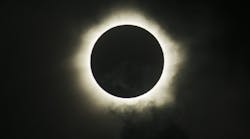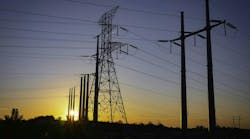European citizens and businesses could rely on a secure supply of electricity during the solar eclipse on March 20, 2015. The fast variations in solar generation and difficult to anticipate impact on demand were successfully managed by Transmission System Operators (TSO) thanks to meticulous preparation, and strong regional and European cooperation.
The European power system needs to be balanced every single second. Between 9.00 and 12.00, Brussels time, TSOs had to reinforce their cooperation to cover the unusually fast loss followed by even faster reintegration of some 17 GW of solar generation. Distribution System Operators (DSOs) and generators notably responded to the call for proactive cooperation.
“Europeans are used to just push a button to switch the light on. They tend to forget all the highly technical and complex systems and tasks needed to maintain a constant balance between generation and demand on an interconnected Power System” says Pierre Bornard, Deputy CEO of the French TSO RTE and Chairman of the Board of the European Network for Transmission System Operators, ENTSO-E.
The TSOs had managed to forecast with a lot of precision the effect of the eclipse on solar generation; taking even into account the ‘worst case scenario’ that the eclipse would take place on a sunny day. The sun was indeed shining this morning in Southern Germany and Northern Italy where the concentration of photovoltaics is the greatest of all the ENTSO-E area. The most critical moment was between 10:45 and 11:15 when the solar generation started to go up again.
Germany and Italy were facing the biggest challenges. In Germany, solar generation this morning was even exceeding the normal seasonal level, as a result of very sunny weather. But despite this challenge, German TSOs managed very smoothly the high and fast variations of 39 GW of installed solar generation whilst relying on power reserves at national and regional level. In view of the sunny weather forecast, Italy had decided in cooperation with DSOs and generators to take an equivalent of 5 GW PV out of the system, between 7:00 am and 2:00 pm today. Thus, PV-based power generation was reduced from 18 to 13 GW during this period. After 2:00 pm reconnection started for the full capacity.
The situation on the European grid was back to normal at 12.00, after the solar eclipse was over.
Pierre Bornard congratulated all the staff in the TSOs control rooms in managing this unprecedented event so successfully. He insisted on the ‘very important role’ played by the TSOs’ Regional Security Coordination Initiatives in keeping the Power System stable. RSCIs, such as Coreso and TSC, were set up by European TSOs, deciding for coordinated answers to more variable power sources as well as more European energy market integration. In the case of the eclipse, the planning information on cross border electricity flows provided by RSCIs complemented the TSOs’ real time operation and allowed for a better coordination of actions.
“Our management of the challenging solar eclipse is an illustration that the TSOs’ regional and bottom-up approach to an efficient coordination is the right way to go”, says Pierre Bornard.
TSOs had decided to double their staff in control rooms for the event. They also had planned, as part of the extra preparatory work they carried out through ENTSO-E, that their control rooms would be in continuous communication throughout the morning to increase coordination and reduce reaction times.
“The solar eclipse is an example of the success of European and regional cooperation organised by ENTSO-E“, says Konstantin Staschus, Secretary-General of ENTSO-E. “Many other aspects of European electricity market integration are solved in the network codes delivered by ENTSO-E to regulators and the European Commission. It is urgent that we see a swift adoption of the network codes. So, with the network codes in place, when the next solar eclipse takes place in 2026, the management of such challenging event will be much easier”, continues Konstantin Staschus.
Additional data will be published on ENTSO-E's website and on TSOs' websites.


